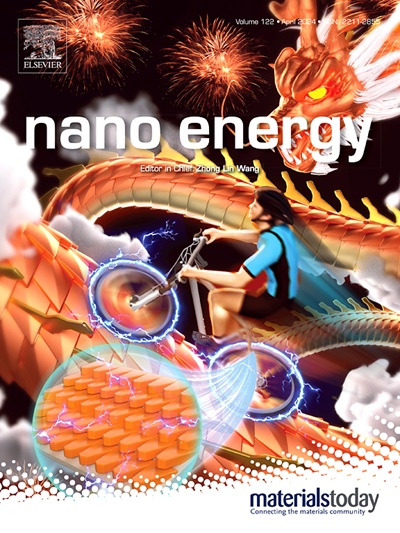Liner-chain polysaccharide binders with strong chemisorption capability for iodine species enables shuttle-free zinc-iodine batteries
IF 16.8
1区 材料科学
Q1 CHEMISTRY, PHYSICAL
引用次数: 0
Abstract
Designing functional binders is demonstrated an effective solution to address the serious issues of active iodine dissolution and polyiodide shuttle faced by aqueous zinc-iodine batteries (AZIBs). Herein, a series of linear-chain polysaccharides are systematacially investigated as the potential water-soluble binders for iodine-loading cathode of AZIBs. According to the results of spectral characterizations and theoretical calculations, SA binder, as the representative of polysaccharides, is verified with strong chemisorption capability and high binding energy for the iodine intermediates owing to the existence of active ether and carboxyl groups, which contributes to suppress the polyiodide shuttle and active iodine dissolution. Meanwhile, the lower Gibbs free energy values indicate the introduction of SA binder is conducive to boost the iodine redox reaction kinetics of iodine-loading cathode. Benefitting from these merits, the Zn//CAC@I2 batteries with SA biner delivers superior self-discharge resistance capability, excellent rate performance, and ultra-durable cycling stability with high reversible capacity of 105.2 mAh g−1 after 8000 cycles at 1 A g−1 and 86.3 mAh g−1 after 40,000 cycles at 5 A g−1, respectively. This work will enlighten the research and development of binder materials for advanced iodine-based energy storage devices, and facilitate the practical application of both polysaccharide binders and AZIBs.

具有强大碘化学吸附能力的衬链多糖粘合剂实现了无穿梭式锌碘电池
设计功能性粘合剂是解决水性锌碘电池(AZIBs)面临的活性碘溶解和多碘穿梭等严重问题的有效方法。本文系统研究了一系列线性链多糖作为 AZIBs 负极加碘的潜在水溶性粘合剂。光谱表征和理论计算的结果表明,作为多糖的代表,SA粘结剂具有较强的化学吸附能力,其活性醚基和羧基的存在使其对碘中间产物具有较高的结合能,从而抑制了多碘化物的穿梭和活性碘的溶出。同时,较低的吉布斯自由能值表明,引入 SA 粘合剂有利于提高加碘阴极的碘氧化还原反应动力学。得益于上述优点,含有 SA 粘合剂的 Zn//CAC@I2 电池具有卓越的抗自放电能力、优异的速率性能和超持久的循环稳定性,在 1 A g-1 条件下循环 8000 次后,可逆容量达到 105.2 mAh g-1,在 5 A g-1 条件下循环 40000 次后,可逆容量达到 86.3 mAh g-1。这项工作将对先进碘基储能器件粘结剂材料的研究和开发带来启发,并促进多糖粘结剂和 AZIB 的实际应用。
本文章由计算机程序翻译,如有差异,请以英文原文为准。
求助全文
约1分钟内获得全文
求助全文
来源期刊

Nano Energy
CHEMISTRY, PHYSICAL-NANOSCIENCE & NANOTECHNOLOGY
CiteScore
30.30
自引率
7.40%
发文量
1207
审稿时长
23 days
期刊介绍:
Nano Energy is a multidisciplinary, rapid-publication forum of original peer-reviewed contributions on the science and engineering of nanomaterials and nanodevices used in all forms of energy harvesting, conversion, storage, utilization and policy. Through its mixture of articles, reviews, communications, research news, and information on key developments, Nano Energy provides a comprehensive coverage of this exciting and dynamic field which joins nanoscience and nanotechnology with energy science. The journal is relevant to all those who are interested in nanomaterials solutions to the energy problem.
Nano Energy publishes original experimental and theoretical research on all aspects of energy-related research which utilizes nanomaterials and nanotechnology. Manuscripts of four types are considered: review articles which inform readers of the latest research and advances in energy science; rapid communications which feature exciting research breakthroughs in the field; full-length articles which report comprehensive research developments; and news and opinions which comment on topical issues or express views on the developments in related fields.
 求助内容:
求助内容: 应助结果提醒方式:
应助结果提醒方式:


